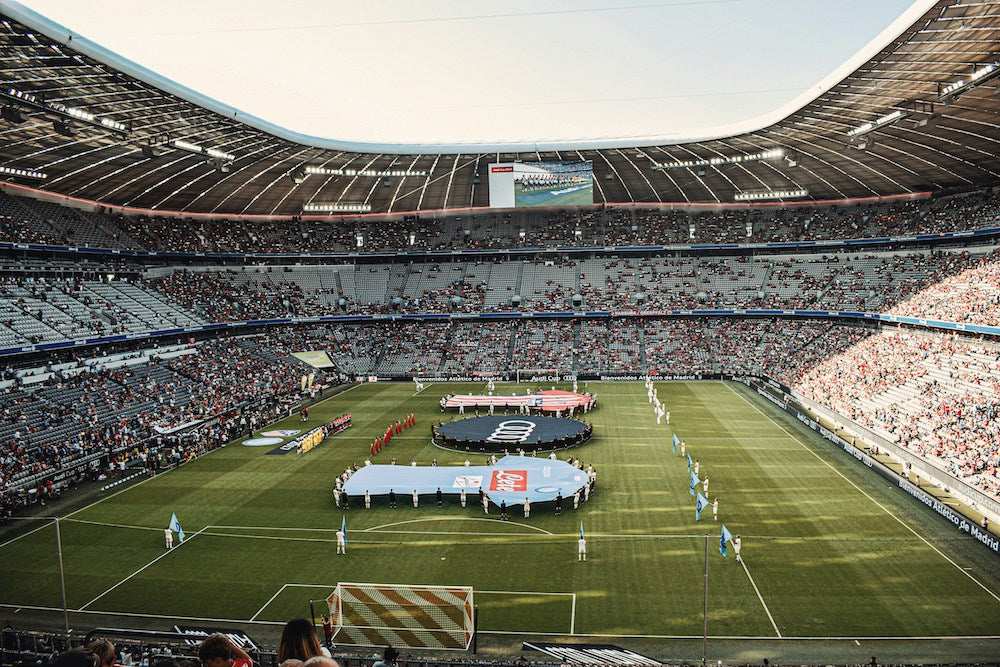In the world of sports, technology is transforming the spectator experience inside and outside stadiums. What was once a simple place to watch sporting events has become a center of entertainment and connectivity, where technology plays a fundamental role in improving the fan experience. From the implementation of giant screens and surround sound systems to the introduction of mobile applications and augmented reality, sports stadiums are undergoing a technological revolution that is changing the way we live and enjoy sport.
The rise of technology in stadiums
In recent years, we have witnessed a true technological revolution in sports stadiums around the world, marking a before and after in the way we live and experience sporting events. This transformation has been driven by a wide range of technological advances that have completely transformed the viewer experience. From improvements in basic infrastructure, such as LED lighting systems that offer exceptional visual quality and high-definition displays that allow viewers to not only see, but feel the action in real time, to the implementation of more advanced technologies, such as artificial intelligence and the Internet of Things (IoT), which have given rise to a series of innovations that seemed unthinkable just a few years ago.

These technological advances are changing the way fans interact with sport, creating a more immersive and personalized experience than ever before. From the ability to watch instant replays from multiple angles to the ability to access real-time statistics and detailed analysis, fans are more connected to the game than ever.
This increasing reliance on technology in sports stadiums has been largely driven by fan demand for a more interactive and personalized experience. Today's viewers expect much more than just watching the game; They want to feel part of the action and have the ability to interact with the game in new and exciting ways. Additionally, stadium owners have also recognized the potential of technology to increase revenue and improve operational efficiency. From selling targeted advertising to optimizing event management and security, technology is playing an increasingly important role in all aspects of a sports stadium operation.
The rise of technology in sports stadiums has completely transformed the spectator experience, creating a new era of interactivity and connectivity that is redefining the way we live and enjoy sport. With the continued evolution of technology and increasing fan demand for a more immersive and personalized experience, this trend is likely to only continue to accelerate in the coming years, providing new opportunities and challenges for sports stadium owners and operators throughout. the world.
Technological innovations in stadiums
One of the most notable innovations in sports stadiums is the introduction of state-of-the-art video and sound systems. Giant high-definition screens and surround sound systems provide viewers with an unrivaled visual and auditory experience, allowing them to feel closer to the action than ever before. Additionally, there are stadiums that have introduced technologies such as augmented reality and virtual reality that are taking the spectator experience to a new level, allowing them to interact with the game in ways never seen before.

Another important aspect of the technological revolution in sports stadiums is the introduction of mobile applications and high-speed Wi-Fi connectivity services. These applications allow fans to access a variety of services, such as purchasing tickets and food, viewing instant replays, and participating in contests and promotions in real time. Additionally, high-speed Wi-Fi connectivity services ensure that spectators can share their experiences on social media and access exclusive online content while at the stadium.
Benefits for stadium owners and partners
It is no secret that the world of sports, especially football, are immense areas of business that generate large amounts of money. So these technological advances in sports stadiums, in addition to improving the fan experience, are also generating a series of benefits for stadium owners. The implementation of advanced technologies, such as event management systems and real-time data analytics, is helping stadium owners improve operational efficiency and reduce costs. Additionally, the introduction of high-speed Wi-Fi connectivity services and mobile applications is allowing stadium owners to increase revenue by selling advertising and marketing products and services to fans.
Challenges and considerations to take into account
Despite the numerous benefits that the technological revolution offers in sports stadiums, it also poses a number of challenges and considerations for stadium owners and operators. One of the most important challenges is ensuring the security and privacy of fan data, especially in an increasingly connected environment. Additionally, implementing advanced technologies can be costly and require significant investment in infrastructure and staff training. However, with increasing demand for a more interactive and personalized experience from fans, the technological revolution in sports stadiums appears to be inevitable and will continue to transform the way we live and enjoy sport in the future.

Enjoy sport without limits, endless opportunities.
In short, the technological revolution in sports stadiums is transforming the fan experience and offering a series of benefits for both spectators and stadium owners and investors. So, seeing that sports stadiums are undergoing a radical transformation that is changing the way we live and enjoy sports, we ask ourselves, what is the limit? In a reality in which technologies are advancing at incredible speeds, This technological revolution is likely to continue to advance at an accelerated pace in the coming years, providing new opportunities and challenges for sports stadium owners and operators around the world.
FREQUENTLY ASKED QUESTIONS ABOUT TECHNOLOGIES IN SPORTS STADIUMS
How are sports stadiums using augmented reality to improve the spectator experience?
Augmented reality is being used in sports stadiums to offer a more immersive and personalized experience to spectators. For example, fans can use augmented reality mobile apps to access real-time information about players and statistics, or to participate in interactive games during breaks. Additionally, augmented reality can be used to enhance the visualization of the action on the field, allowing viewers to view instant replays from multiple angles and gain a unique perspective of the game.
What is the stadium with the greatest technological advances?
The stadium with the greatest technological advances can vary depending on several factors, such as investment in technological infrastructure, implementation of specific innovations and the ability to offer a state-of-the-art spectator experience. Some notable examples could include the Mercedes-Benz Stadium in Atlanta, United States, which features an impressive array of technologies, such as the largest stadium LED screen in the world; or the Tottenham Hotspur Stadium in London, United Kingdom, which has been designed with a focus on digital connectivity and personalization of the spectator experience.
How are stadiums using artificial intelligence to improve the spectator experience?
Artificial intelligence is being used in stadiums for a variety of purposes, including optimizing event management, personalizing advertising and improving security. For example, artificial intelligence systems can analyze large amounts of data in real time to predict and prevent security incidents, or to personalize the viewer experience by offering relevant content and promotions.

















































